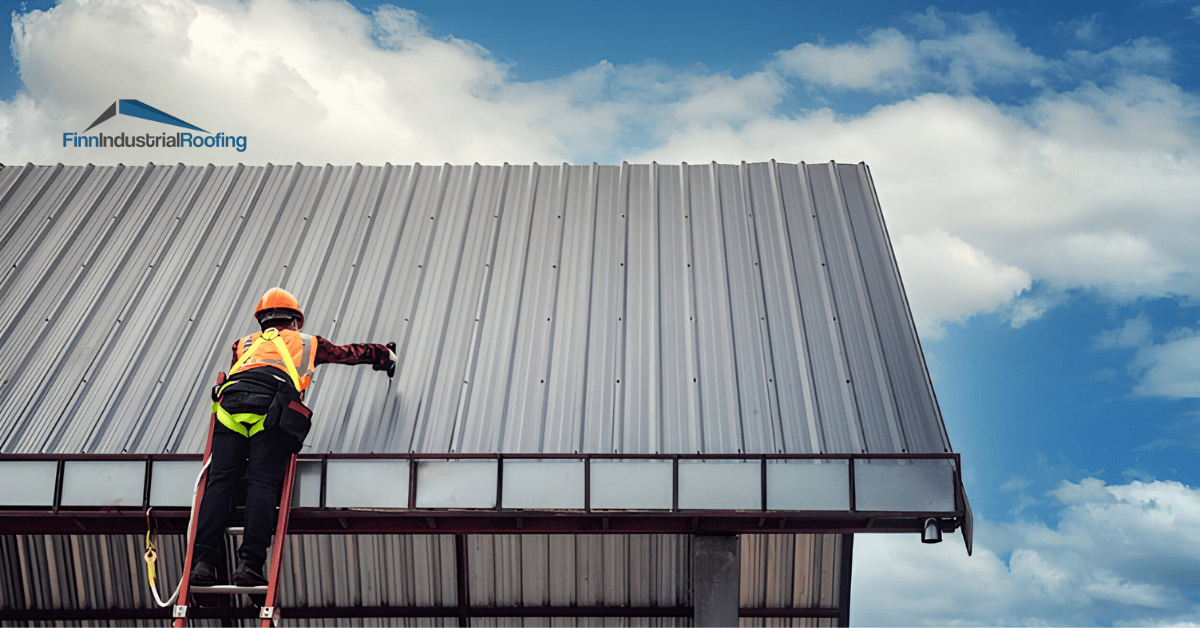Your roof is the most exposed part of your building, constantly facing wind, UV rays, rain, hail, snow, and temperature extremes. Its performance depends on the quality of its design, materials, and installation—but long-term durability ultimately comes down to regular maintenance. Proactive inspections and timely repairs can significantly extend the life of your roof and keep it watertight year-round.
Why Professional Maintenance Matters
Experts recommend bi-annual roof maintenance, ideally in spring and autumn. Hiring a trained roofing professional, rather than a general contractor, ensures issues are properly identified and addressed. Setting up a routine inspection schedule helps catch small problems before they become major, saving you time and money in the long run.
When to Inspect Your Roof
Roof inspections should be performed before and after severe weather events such as storms, hail, or strong winds. Alongside visual checks, consider scheduling a moisture survey, which detects hidden water intrusion within roof materials. There are three main types:
- Infrared Scanning: Measures retained or lost heat through insulation.
- Nuclear Isotopic Meters: Detect hydrogen ions to identify moisture levels.
- Electrical Capacitance/Resistance: Evaluates how well roof materials conduct electricity, which changes in the presence of moisture.
🔧 Expert Tip: Schedule Inspections Seasonally
Routine roof checks in spring and autumn help catch problems early, before summer heat or winter storms cause further damage. Always schedule after extreme weather events—even minor hail or strong winds can loosen fittings or crack brittle rooflights.
What to Expect from a Roof Maintenance Visit
A professional roofer will focus on high-risk areas known for developing faults. These typically include:
- Flashings. These are often the source of leaks, especially around walls, perimeters, skylights, and other penetrations. Flashings are vulnerable due to thermal expansion, movement, and UV exposure.
- Field Areas. The main surface of the roof is checked for wear and tear, seam integrity, and general degradation.
🔧 Expert Tip: Don’t Neglect Sky-Lights
Faded or cracked rooflights aren’t just cosmetic. They can block up to 60% of natural light, increasing energy bills and causing workplace fatigue. Replacing aged rooflights is one of the most cost-effective upgrades for industrial units.
Common maintenance tasks
Loose Debris Removal
Leaves, branches, and other debris can collect over winter. If the roof is difficult to access or the debris is significant, a professional should handle the removal—ideally when the roof is dry to avoid slipping hazards.
General Inspection & Minor Repairs
The contractor will inspect the attic for water stains, check for missing or lifted shingles, and assess areas of moss or mould growth. They’ll repair or replace any damaged flashings or tiles. If your shingles are curling, cracking, or lifting unevenly, it may indicate the roof is nearing the end of its lifespan—a professional can confirm whether replacement is necessary.
Gutters, Fascia, Soffits & Downspouts
These components are crucial to effective drainage and overall roof health. Gutters and downspouts are cleared of debris using scoops or soft brushes, while fascia boards and soffits are checked for damage, peeling paint, or missing sealant. Any necessary touch-ups or replacements are typically done during the same visit.
Note: While certain routine tasks like clearing blocked gutters or removing debris can be handled by in-house building staff, anything beyond that should be left to qualified professionals to avoid safety risks and ensure lasting repairs.
🔧 Expert Tip: Preventative Maintenance Pays Off
Investing in a Planned Preventative Maintenance (PPM) contract reduces long-term costs and avoids unplanned shutdowns. A small leak left unchecked can lead to major structural damage and a repair bill ten times higher than routine upkeep.
Frequently Asked Questions for Roof Maintenance
Finn Industrial Roofing is a trusted name in industrial roof care across Dorset and the South West. Here’s why businesses choose us:
Specialist industrial roofing expertise
Fully trained, insured, and qualified team
High-quality materials and durable installations
Tailored maintenance plans that prioritise longevity
Responsive customer service and clear communication
With years of proven results in commercial and industrial sectors, we’re committed to preserving your investment and keeping your operations running smoothly.
How can I book a survey or request more information?
We offer free, no-obligation roofing surveys for industrial properties throughout Dorset and the South West. To book:
📞 Call: 0800 7999382
📧 Email: finnindustrialroofingltd@hotmail.com
Our team will arrange a convenient time to visit your site, conduct a thorough inspection, and provide a detailed site assessment, completely free of charge.
For optimal performance and longevity, industrial roofs should be professionally inspected and maintained at least twice a year, typically in spring and autumn. These inspections allow for timely detection of damage caused by winter frost or summer heat and help prepare the system for the next seasonal shift. Maintenance should also follow severe weather events, such as heavy winds, hailstorms, or prolonged rain.
Scheduled maintenance offers a proactive approach that helps:
Extend roof lifespan by addressing minor issues early.
Reduce operational disruption with planned rather than emergency work.
Prevent internal damage from leaks or poor drainage.
Control long-term costs by avoiding major repair or replacement.
Over time, these efforts can add 5–15 years to the service life of your roof.
There are several red flags that suggest your roof may be compromised:
Leaks or water stains inside the building
Discolouration or brittleness in rooflights
Accumulated debris, moss or algae
Sagging gutters or overflowing downspouts
Visible wear to flashings or seams
If you observe any of these signs, contact us for an inspection.
At Finn Industrial Roofing, a standard maintenance visit covers:
Visual roof inspection and structural checks
Flashings assessment around roof penetrations and edges
Rooflight condition review, checking for cracks or fading
Debris clearance from the roof surface
Drainage system checks, including gutters, fascia, soffits, and downspouts
Moisture detection, where appropriate
Minor repairs can often be completed on the spot, and any larger issues will be documented with recommendations.
Yes – some tasks such as:
Clearing debris from flat roofs
Unblocking gutters and downspouts
Spotting and reporting early signs of wear
… can be handled internally by trained building staff. However, anything involving height access, flashing repairs, rooflights, or structural integrity should only be managed by a qualified roofing contractor for both safety and warranty reasons.
A PPM contract is a structured maintenance plan designed to:
Perform scheduled roof inspections
Address minor faults before they escalate
Offer predictable budgeting for repairs
Extend the life of your existing roof system
At Finn Industrial Roofing, our PPM packages are tailored to your roof type, site operations, and regulatory requirements. Clients often see cost savings of up to 40% over reactive maintenance approaches.
Rooflights play a key role in letting natural daylight into industrial spaces. Over time, they can become:
Cracked or brittle from UV exposure
Discoloured and reduce light levels
Prone to leaking around the seals
Replacing outdated rooflights can increase interior brightness by up to 60%, lowering reliance on artificial lighting and improving worker productivity and morale.
Yes moisture surveys are essential for detecting hidden water intrusion not visible during standard inspections. Common survey methods include:
Infrared scanning: Detects retained heat in wet insulation
Nuclear meters: Identify hydrogen atoms indicating trapped moisture
Electrical resistance/capacitance: Measures material conductivity changes caused by moisture
We recommend including a moisture survey every few years or after any major leak.
Finn Industrial Roofing has extensive experience working on active industrial sites. We schedule all works around your operations and use safe, non-invasive methods. In many cases, tasks like rooflight replacement or flashing repairs can be done with zero downtime.
We also offer out-of-hours work for high-priority clients where disruption must be kept to an absolute minimum.














